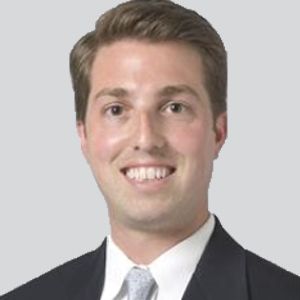Article
The Current State and Future Promise of Neurology
Author(s):
The importance of addressing disorders of the brain cannot be overstated, and doing so will be essential to our generation and generations to come.

Imad Najm, MD

Cardiovascular disease and cancer have been the great killers of our time. Disorders of the brain are the great cripplers to our generation and pose a great threat to our children and grandchildren.
Alzheimer’s disease, major depression, Parkinson disease, stroke, generalized anxiety, multiple sclerosis, and epilepsy are the leading causes of disability in the world, including in developing nations. Everyone is at risk, there are no exceptions. The risk of Alzheimer disease alone is 17% at 75 years of age and 33% at 85.
Despite significant attempts and high expenditures by government agencies, foundations, and pharmaceutical companies, all neurodegenerative diseases remain incurable and are only symptomatically managed. Using Alzheimer disease as an example, the total cost associated with the development of a single drug has been estimated at $5.6 billion, with a failure rate of 98%. The success rate for symptomatic management of other disorders, such as Parkinson disease, is slightly better but, to date, the failure rate for developing disease-modifying drugs has been 100%.
As neurodegenerative disorders become symptomatic only after significant and irreversible central nervous system damage has already occurred, the greatest opportunities for a cure have already been lost by the time of clinical diagnosis. It is estimated that 50% to 70% of the dopamine-producing cells in the brain have already died by the time a person has been diagnosed with Parkinson disease. In other words, curing a patient with end-stage Parkinson disease is—unlikely.
Robert Bermel, MD

There are examples where substantial progress has been made. In stroke, the development of clot-busting medications and devices to restore blood flow to the brain saves lives and preserves function, in cases where they can be deployed soon enough. In multiple sclerosis (MS), the availability of MRI as a tool for early diagnosis and as an outcome measure led to successful clinical trials of disease-modifying therapies, and the accompanying reality that early effective treatment of relapsing forms of MS can keep people out of wheelchairs. The development of antisense oligonucleotides for the treatment of Duchenne muscular dystrophy and spinal muscular atrophy may hold life-altering promise for children with these and other genetic disorders.
Despite these breakthroughs, candidate therapies for neurodegenerative disorders that have shown strong target engagement and promising therapeutic effects in preclinical and early clinical studies eventually fail because they cannot stop neurodegeneration or replace lost tissue. Imaging biomarkers have been developed for some neurodegenerative disorders like Alzheimer’s but only validated to more advanced stages of the disease when pathology has significantly and irreversibly afflicted brain cells. Biomarkers of disease can shift over time: clinical phenotype may result from biological processes that occur during the silent phase but are unrelated to biomarkers measured during the symptomatic phase.
Because we cannot predict which adults will become sick, novel drugs would require testing in large and heterogeneous populations with very low signal-to-noise ratio readouts. Such endeavors are impractical and cost-prohibitive to both public funders and industry. The identification of surrogate end points is therefore critical to new therapeutic development.
Therefore, the difficulty in overcoming brain disorders is related to many, interconnected factors. The complexity of the brain is one, and our limited understanding of why brains get sick is another. A key barrier to developing a cure? To predict who will get sick and identify what happens in the brain and other body systems before the clinical expression of the disease.
The opportunity to cure neurodegeneration lies before it becomes symptomatic (the “silent phase”), in its very early stages. The uncovering of the causal underpinnings of the silent phase requires longitudinal studies of large numbers of at-risk neurologically healthy individuals. Such studies will uncover the biological and phenotypical changes that occur before a neurological disease ever manifests.
Making progress will therefore depend on shifting the very definition of these diseases, from clinical to biological. We currently require that a patient with amnesic cognitive impairment progress to a point that it affects their activities of daily living before we can diagnose them with Alzheimer’s Disease. Biomarkers, both liquid and imaging biomarkers, may be able to more accurately identify Alzheimer’s biology in the preclinical phase, holding promise for an earlier and more biological basis for the diagnosis.
But how will we identify these biomarkers, and validate them for use as diagnostic tools and markers of treatment efficacy?
The recently launched Cleveland Clinic Brain Study (CCBS) is inspired by the Framingham Heart Study. It aims to longitudinally measure neurological function in thousands of neurologically healthy individuals over 50 years of age (or 20 years if there is a history of a first-degree relative with MS). This periodic and systematic prospective assessment will lead to the identification of disease inflection points, that is, the moment when the disease first becomes apparent in individuals who become symptomatic. The inflection point will serve as the anchor, along with the control data from individuals who remain neurologically healthy, to interpret all presymptomatic biological changes captured prospectively. During the first phase, CCBS will enroll ~10,000 healthy volunteers for an initial follow-up period of 5 years. All individuals will undergo serial neurological assessments and a series of tests that include blood, eye retina scan, brain MRI, cognition, stool, EEG, sleep studies, and cerebrovascular studies before the onset of any symptoms. Deep genetic sequencing, gene methylation analyses, protein studies (such as for inflammation biomarkers) on the blood samples, and microbiome studies on the stool samples will be done on all volunteers. The changes in the biomarkers will be studied over time (before the onset until the start of neurological disease) with deep analyses using machine learning and artificial analysis algorithms. Signature biomarkers of various neurological disorders before their onset. These biomarker fingerprints of the disease (before symptoms develop) will help to select patients for interventional trials and serve as targets for future therapeutic interventions.
We have an obligation to future generations to make progress, to transform our field into an area of rapid discovery and therapeutic growth so that our children and grandchildren will not suffer the same crippling neurodegenerative disorders that plague us today.





